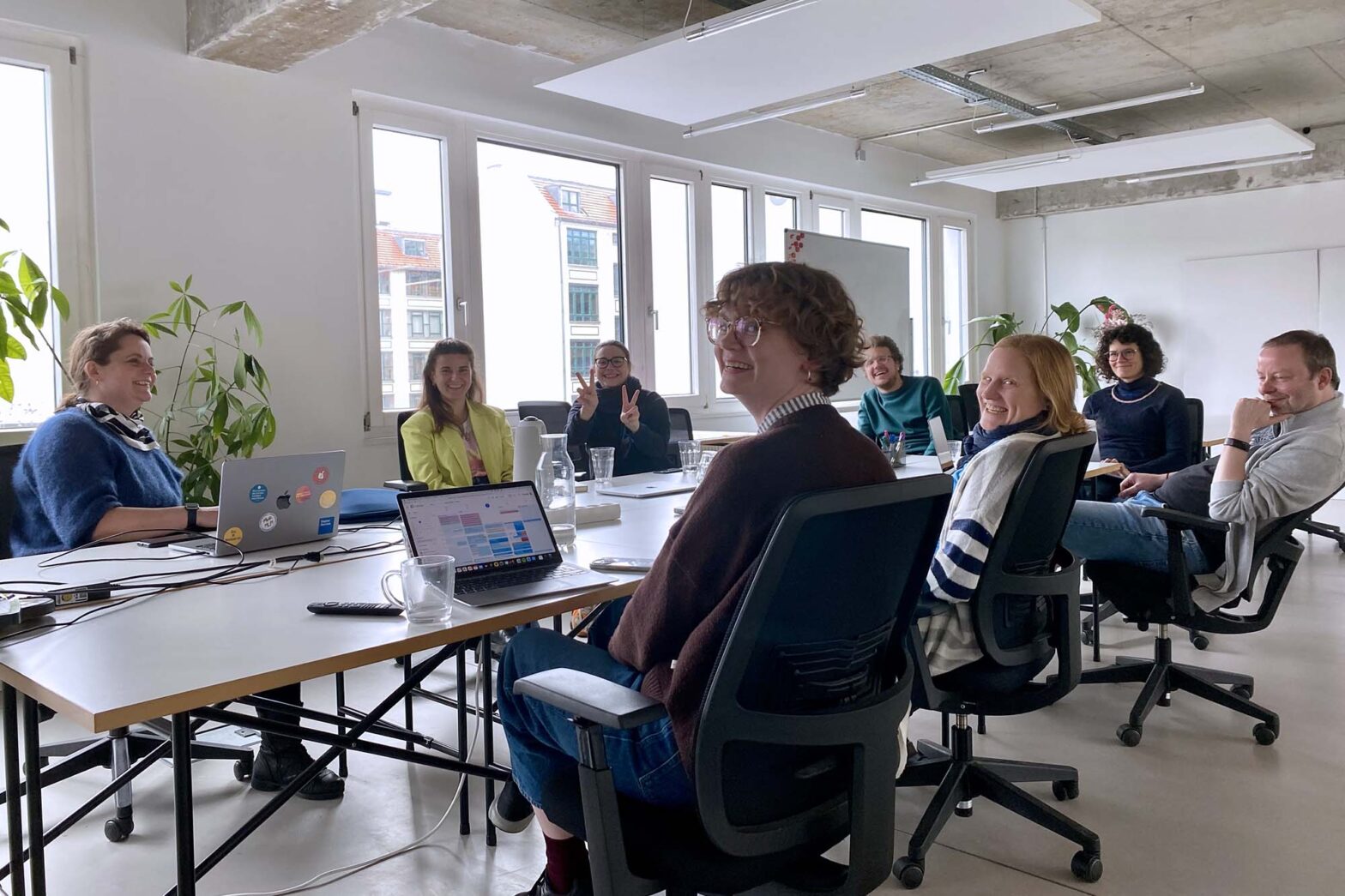This week, I welcomed four new people to our growing design and user research discipline. Two designers, one user researcher, and our first content designer joined the Access to Justice project. On Wednesday, I found the project’s entire user-centred design (UCD) crew their first extended meeting together.
Doubling a discipline from one week to another requires significantly adapting the setup. As the project scope grows and the UCD team members juggle various responsibilities, the growth will allow us to do more things better. We can do more focused research, design better scalable platform components, and shape content iteratively while building a content style guide.
From May onwards, we will gradually change the ways designers, software engineers, and user researchers work across multiple project streams. We will take things step by step, review, and iterate swiftly. Firstly, everyone new to the team needs to arrive, get to know each other, and build a relationship.
Our general onboarding at Digital Service now includes 10 sessions. I am involved in 2 of them – the introduction to disciplines and the introduction to accessibility. In addition, as I had a good reason this month, I put together a comprehensive UCD onboarding deck. It will become continuously helpful, with probably another 6 people joining us in the coming months.
Beyond our weekly discipline get-together on Thursday morning, we are adding various opportunities to meet and exchange. We will have an evening social in mid-April, a Let’s Talk Practice session in May, and a discipline offsite in June.
While I am interviewing designers for 2 open positions, we published a new communication designer role on Friday. The position will be maternity cover and vital to continuing our—here, I am obviously biased—strong graphic and communication design game. Demonstrating a mature design culture and setting the tone, I selected a number of works for the advertising LinkedIn post.
I hope for fewer candidates than the regular UX/UI designer role, as we were a little overwhelmed when receiving over 220 applications in the past few weeks.
Connecting with fellow accessibility specialists
Time flew by on Thursday afternoon when we visited our Berlin state colleagues responsible for digital accessibility. That includes accessibility monitoring. For almost 3 hours, we sat down to get to know each other, understand each other’s remits and challenges and, most importantly, establish common ground and find ways to team up in the future. With me were our design accessibility hero Marion and legal counsel Jana. We came with a short deck and did not even get to it until 2 hours in the meeting.
Beyond what we could learn about our colleagues from afar, we were curious to understand their setup, hear about their all-too-common challenges of capex vs. opex, and learn about their motivations and drivers. Their team remains tiny but might grow, and it does what it can to run internal workshops, create topical awareness, and contribute to lower-level policies.
While I considered inviting them to local and national level meetups, they argued it needs a big conference to make a proper splash. Only that can change mindsets and practices.
Unsurprisingly, procurement and good project governance were topics that we got to quickly. While accessibility is supposed to be mandated by law and given on paper, it is not what suppliers are actually and truthfully doing. We heard how major public sector suppliers ignore contractually agreed accessibility requirements when building commissioned software products for the administration. The reason: So far, no one has really been checking, and it’s an easy way to cut costs. At the same time, the same companies have large separate teams doing nothing else but accessibility audits for public organisations. Creating non-accessible products and services in one unit and offering accessibility auditing as a separate offering in another unit doesn’t seem to cause any conflicts.
Things seem twisted. Yet there are no consequences—unlike in Norway, we learnt, where daily fines are in the thousands for non-compliance. In Germany, even reporting and filing complaints do very little. Those can come from a number of angles: the reporting mechanisms now in place, one being discrimination complaints. Understandably, our colleagues argue tighter laws are needed – as previous ones have been willingly misinterpreted by some. Hence, the goal needs to be making it unambiguously clear that there is no option but to ensure accessibility when commissioning and operating digital services.
While there are many challenges, we closed with optimism that many things will change for the better with improved laws, more public pressure on government institutions and private businesses to do the right thing and consider accessibility from the start, and more.
There are things we’d like to do together, including teaming up for the Global Accessibility Awareness Day in 2025. In the short term, I want us to do more topical events at NExT and our Berlin-based Öffentliches Gestalten meetup.
Now, after this meeting, I want us to fast-track the accessibility blog we have been working on for a little too long.
What’s next
Next week will be busy. I have to prepare and co-run both a short introduction to content design as a new sub-discipline in the Thursday all-hands and write and open a lunch and learn session on user research. My colleagues Anja and Sonja are preparing the vast majority of that. But I still need to draft and handle a contextualising opening part.
As I am joining their established digital council, I will take on the responsibility of digital councillor for my home federal state, Sachsen-Anhalt. I will travel to the state capital, Magdeburg, to attend my first meeting.

